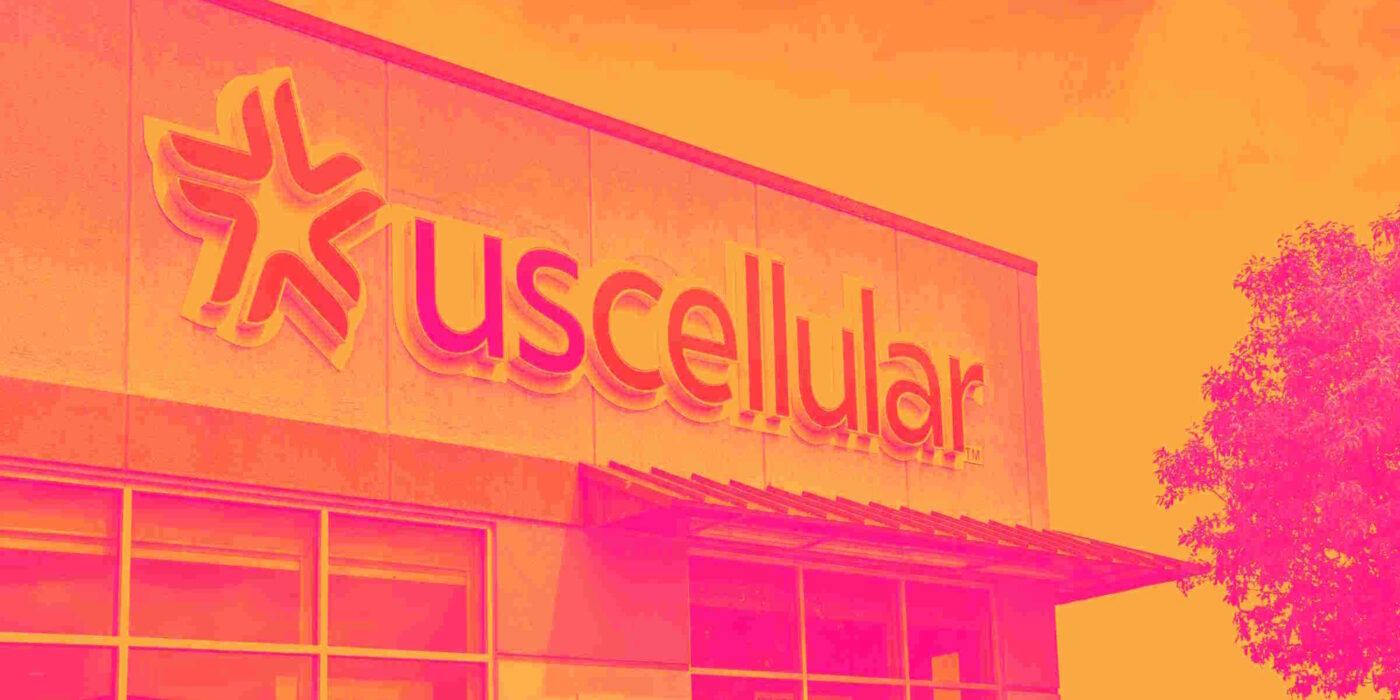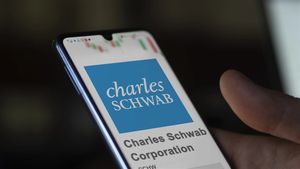
Wireless telecommunications provider U.S. Cellular (NYSE: USM) missed Wall Street’s revenue expectations in Q1 CY2025, with sales falling 6.2% year on year to $891 million. Its GAAP profit of $0.20 per share was 40.2% below analysts’ consensus estimates.
Is now the time to buy USM? Find out in our full research report (it’s free).
U.S. Cellular (USM) Q1 CY2025 Highlights:
- Revenue: $891 million vs analyst estimates of $919.4 million (6.2% year-on-year decline, 3.1% miss)
- EPS (GAAP): $0.20 vs analyst expectations of $0.34 (40.2% miss)
- Adjusted EBITDA: $254 million vs analyst estimates of $256.6 million (28.5% margin, 1% miss)
- Operating Margin: 4.6%, in line with the same quarter last year
- Free Cash Flow Margin: 9.9%, up from 7.4% in the same quarter last year
- Market Capitalization: $5.19 billion
StockStory’s Take
U.S. Cellular’s first quarter results were shaped by both external industry competition and internal restructuring efforts, as management worked to maintain operational stability ahead of its anticipated transaction with T-Mobile. CEO LT Therivel noted improvements in postpaid handset results and highlighted growth in third-party tower revenue, crediting both new colocations and escalators on renewed leases. Simultaneously, the company addressed ongoing customer losses and increased promotional costs, with Therivel acknowledging, “our size and lack of scale makes it difficult to sustain this balance of high promotional expense and reduced investments.”
Looking forward, management’s guidance is focused less on traditional financial targets and more on the operational and structural changes required to close the T-Mobile transaction, which is expected midyear, subject to regulatory approval. CFO Doug Chambers clarified that no formal guidance is being provided due to the pending sale, but emphasized that free cash flow will remain a focus and that special dividends to shareholders are likely upon closing. The leadership team also discussed ongoing cost optimization, the expected transition of employees to T-Mobile, and the company’s evolving role as a tower operator post-transaction.
Key Insights from Management’s Remarks
U.S. Cellular’s leadership emphasized transaction readiness, cost discipline, and tower business momentum as key themes this quarter. The company’s operational efforts were set against a backdrop of declining service revenues, driven by persistent handset customer losses and a highly competitive wireless market.
- Transaction Preparation: Management spent significant time preparing for the anticipated T-Mobile transaction, including regulatory interactions, employee transition planning, and financial flexibility initiatives such as extending bank maturities and amending revolvers.
- Tower Revenue Growth: The Tower business saw 6% revenue growth, attributed to increased third-party colocations and escalators on renewed leases. Management expects further tower demand as carriers seek additional capacity and network densification, and views the T-Mobile master lease agreement as a future tailwind.
- Competitive Wireless Market: The wireless segment continued to face aggressive promotions from both traditional carriers and cable wireless competitors, resulting in ongoing negative net handset additions. Management responded by increasing its own promotional offers, which improved handset losses but did not reverse overall customer declines.
- Cost Optimization Efforts: Operating expenses remained essentially flat, and capital expenditures declined as the company completed most of its 5G coverage build. Management highlighted $79 million in free cash flow for the quarter, achieved through cost control and reduced capital intensity.
- Employee Transition and Restructuring: With T-Mobile expected to offer employment to a majority of U.S. Cellular’s workforce, the company outlined severance and transition benefits for those not retained, as well as estimated costs tied to employee liabilities and accelerated stock awards.
Drivers of Future Performance
Management’s outlook for the remainder of the year centers on successfully closing the T-Mobile transaction, navigating ongoing competitive pressures in wireless, and repositioning the company around its tower infrastructure.
- Transaction-Driven Uncertainty: The pending sale to T-Mobile remains the primary determinant of near-term strategy, with key variables including regulatory approvals, debt exchange outcomes, and the operational transition of employees.
- Tower Business Focus: Post-transaction, U.S. Cellular expects to operate primarily as a tower company, with management citing sustained industry demand for tower infrastructure and plans to report metrics like AFFO (Adjusted Funds From Operations) to align with industry standards.
- Cost Structure Adjustments: The company is actively working to resize its cost base and capital structure in anticipation of a smaller, infrastructure-focused business, with free cash flow preservation and leverage levels as ongoing priorities.
Top Analyst Questions
- Ric Prentiss (Raymond James): Asked about the timeline for regulatory approval of designated entity spectrum transfers. Management replied that timing is uncertain but expressed optimism given recent legal developments.
- Ric Prentiss (Raymond James): Inquired about free cash flow run rate prior to transaction close. CFO Doug Chambers stated that while capex is down, no specific guidance is provided, but excess cash at close will be distributed via special dividend.
- Ric Prentiss (Raymond James): Sought clarification on the impact and timing of the debt exchange offer. Chambers explained the outcome depends on holder decisions, with the process launched about 50 days before anticipated close.
- Sergey Dluzhevskiy (GAMCO Investors): Questioned how U.S. Cellular plans to increase third-party colocation ratios post-transaction. CEO LT Therivel cited in-house sales efforts and ongoing industry demand as key drivers, while also noting a focus on operating efficiency.
- Sergey Dluzhevskiy (GAMCO Investors): Asked about monetization of retained spectrum outside the T-Mobile sale. Management said the preference is to sell, but they are open to leasing or creative uses if market conditions warrant.
Catalysts in Upcoming Quarters
Looking ahead, the StockStory team will be monitoring (1) the regulatory progress and closing timeline of the T-Mobile transaction, (2) the operational transition of employees and clarity on severance and restructuring costs, and (3) the initial performance and reporting structure of U.S. Cellular’s tower business post-transaction. We will also watch for updates on spectrum monetization efforts and free cash flow trends as the company’s business model shifts.
U.S. Cellular currently trades at a forward EV-to-EBITDA ratio of 5.4×. In the wake of earnings, is it a buy or sell? See for yourself in our free research report.
Stocks That Trumped Tariffs in 2018
Market indices reached historic highs following Donald Trump’s presidential victory in November 2024, but the outlook for 2025 is clouded by new trade policies that could impact business confidence and growth.
While this has caused many investors to adopt a "fearful" wait-and-see approach, we’re leaning into our best ideas that can grow regardless of the political or macroeconomic climate. Take advantage of Mr. Market by checking out our Top 5 Strong Momentum Stocks for this week. This is a curated list of our High Quality stocks that have generated a market-beating return of 176% over the last five years.
Stocks that made our list in 2020 include now familiar names such as Nvidia (+1,545% between March 2020 and March 2025) as well as under-the-radar businesses like the once-micro-cap company Tecnoglass (+1,754% five-year return). Find your next big winner with StockStory today.





